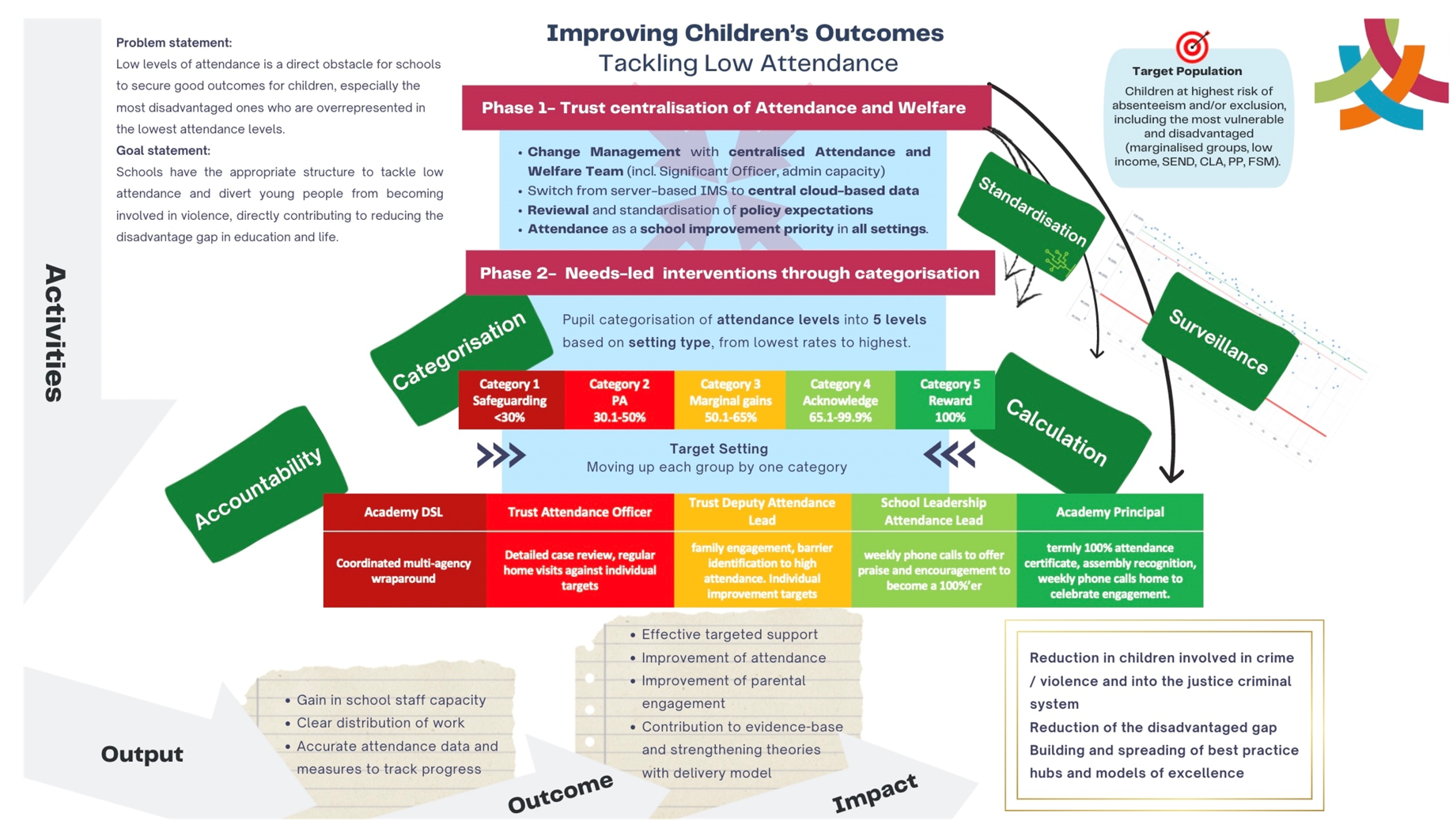
School Attendance
Driver
We recognise that low school attendance is the single most significant hurdle school leader’s face to secure the very best outcomes for children.
The concern
Pre-pandemic attendance across the Trust was well-adrift of national expectation. This pattern was a significant concern, and the Trust Board was clear that the organisation could not deliver its intent to Empower through Education without making substantial improvements.

Pre-pandemic absence rates (2018-19)

Collaboration
In 2020 the Trust Extended Leadership Team, comprising Trust executives and Academy Principals overwhelming, supported a proposal to build central capacity to make rapid improvements and protect leaders’ time to focus on curriculum and quality matters within each setting.

The Strategy
Phase 1: Change Management
- Move away from school-based isolated attendance officers
- Implement a central Attendance and Welfare team with a significant officer and administrative capacity
- Move from a server-based IMS system to cloud-based to support a centralised approach
- Refresh policy expectations
- Standardise attendance as a school improvement priority in all settings.
Phase 2: adopting five key strategic principles
- Categorisation
- Standardisation
- Surveillance
- Calculation
- Accountability
Categorisation
By grouping all children into categories, the strategy would ensure no child was left behind from a new approach. Colleagues working within the plan would be better placed to distribute accountability effectively. The method identified five categories.

Standardisation
Each Academy Principal implements a weekly strategy meeting to ensure all agreed actions in the devolved approach are effective. Where activities are identified as less effective, the steering group are well placed to intervene and reshape methods. Steps are standardised centrally by the Trust.
Surveillance
A key aspect of change was to move to a model where attendance rates were visible, allowing for more significant interrogation. Scatter graphs are adopted to achieve this end set against the agreed categories.

Calculation
The five categories established clear intervention groups. Targets are set against the average absence rate for each cohort with a strategic aim to move each group up by at least one category (marginal/sustainable gains).

Accountability
Accountability was devolved to ensure the challenge was distributed widely at both a school and Trust level. Devolved accountability approach:
- Category 1: Safeguarding Concern
- Lead professional: Academy DSL
- Approach: coordinated multi-agency wraparound
- Category 2: Persistent Absentee
- Lead professional: Trust Attendance Officer
- Approach: detailed case review, regular home visits against individual targets
- Category 3: Marginal Gains
- Lead professional: Trust Deputy Attendance Lead
- Approach: family engagement, identification of barriers to high attendance. Individual improvement targets set.
- Category 4: Acknowledge and Encourage
- Lead Professional: School Leadership Attendance Lead
- Approach: weekly phone calls to offer praise and encouragement to become a 100%’er.
- Category 5: Reward and Celebrate
- Lead Professional: Academy Principal
- Approach: termly 100% attendance certificate, assembly recognition, weekly phone calls home to celebrate outstanding engagement.
The Impact
Current national rates (January 2022)







